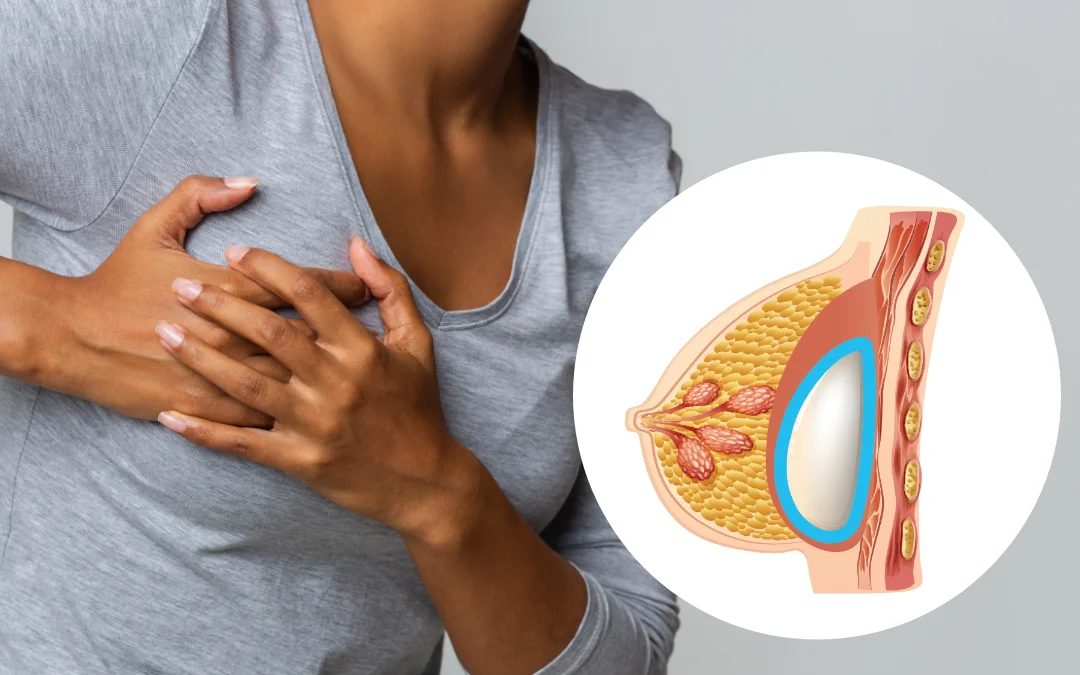Capsular contracture represents one of the most frequently encountered complications following breast augmentation surgery, a concern that can significantly impact both the aesthetic outcome and the patient’s quality of life. As a fibrous capsule naturally forms around any foreign body, including a breast implant, its pathological hardening and tightening can lead to a range of uncomfortable and visually displeasing symptoms. This phenomenon is not merely a cosmetic issue; it often presents as a medical challenge requiring precise diagnosis and effective intervention. For individuals considering or having undergone breast augmentation, particularly those from the United Kingdom exploring advanced medical solutions abroad, understanding the intricacies of capsular contracture is paramount. This authoritative guide delves into the etiology, clinical manifestations, diagnostic approaches, and comprehensive management strategies for this complex condition, emphasizing the importance of informed decision-making and access to high-quality care.
Table of Contents
What is Capsular Contracture?
Capsular contracture occurs when the naturally occurring fibrous capsule that forms around a breast implant tightens and constricts. While a thin, soft capsule is a normal physiological response to a foreign object, a hardened capsule can exert pressure on the implant, leading to a host of problems. This condition can develop months or even years after initial breast augmentation surgery. The severity of capsular contracture is typically graded using the Baker classification system:
- Baker Grade I: The breast feels normally soft and looks natural. The capsule is present but not palpable and does not cause distortion.
- Baker Grade II: The breast feels slightly firm to the touch but appears normal. The capsule may be palpable but not visible.
- Baker Grade III: The breast feels firm, is noticeably hard, and often appears misshapen, with visible distortion of the implant. This grade is typically associated with discomfort.
- Baker Grade IV: The breast is hard, painful, tender, and visibly distorted. Significant discomfort and aesthetic dissatisfaction are common.
Understanding these grades is crucial for both diagnosis and determining the appropriate course of action, as early intervention can sometimes mitigate progression.
Causes and Risk Factors
The exact etiology of capsular contracture is multifactorial and has been the subject of extensive scientific inquiry. Key contributing factors include:
Subclinical Infection and Biofilm Formation
One of the most significant advancements in understanding capsular contracture has been the recognition of subclinical infection and biofilm formation. Research has indicated that even low levels of bacteria, often Staphylococcus epidermidis, can create a biofilm on the implant surface. This biofilm acts as a persistent source of inflammation, triggering the body’s immune response to create a thicker, tougher collagen capsule around the implant. A study published in Aesthetic Surgery Journal by Araco A, et al. (2019) titled “Capsular Contracture After Breast Augmentation: An Update on the Pathophysiology, Prevention, and Treatment” comprehensively reviews this aspect. The study highlights that the pathogenesis of capsular contracture is complex, involving not only subclinical infection but also genetic predisposition and mechanical factors. Biofilm formation around implants, particularly by species like Staphylococcus epidermidis, plays a crucial role in initiating the chronic inflammatory process that leads to capsule formation and subsequent pathological contraction. Prevention strategies, therefore, increasingly focus on rigorous sterile techniques and minimizing bacterial load during surgery.
Haematoma and Seroma
The accumulation of blood (haematoma) or fluid (seroma) around the implant post-surgery can also increase the risk. These collections can create a local inflammatory environment, promoting a more aggressive healing response and leading to a thicker, tighter capsule.
Implant Characteristics
While highly debated, certain implant characteristics are thought to influence the risk. Textured implants were initially believed to have a lower rate of capsular contracture due to tissue adherence, but recent concerns regarding Breast Implant-Associated Anaplastic Large Cell Lymphoma (BIA-ALCL) have led to a re-evaluation and, in some cases, a reduction in their use. Smooth implants may have a higher rate in some studies, although modern surgical techniques aim to mitigate this.
Surgical Technique
Careful surgical technique is paramount. Minimal tissue trauma, precise dissection, and meticulous haemostasis (control of bleeding) during the breast implant surgery can significantly reduce the risk. Placement of the implant, whether subglandular (above the muscle) or submuscular (below the muscle), has also been a subject of discussion, with some data suggesting a lower incidence in submuscular placement.
Patient Factors
Individual patient factors, including genetics, smoking status, and pre-existing autoimmune conditions, can also play a role in the propensity for capsular contracture.
Symptoms and Diagnosis
The symptoms of capsular contracture can vary in severity and presentation. Patients typically report one or more of the following:
- Firmness or hardness of the breast.
- Pain or tenderness, ranging from mild discomfort to severe, constant pain.
- Visible distortion of the breast shape, often appearing unnaturally round or pulled upwards.
- Palpable lumpiness or irregularities around the implant.
- Reduced implant mobility within the breast pocket.
Diagnosis usually involves a physical examination by an experienced surgeon. The Baker classification system is used to grade the severity. Imaging studies such as ultrasound or MRI may be employed to confirm the diagnosis, assess the integrity of the implant, and rule out other complications.
Prevention Strategies
While complete prevention is not always possible, several strategies are employed to minimize the risk of capsular contracture:
- Aseptic Technique: Strict adherence to sterile protocols during surgery is critical to reduce bacterial contamination and biofilm formation.
- Minimizing Tissue Trauma: Gentle handling of tissues, precise dissection, and meticulous haemostasis reduce inflammation and potential for seroma/haematoma formation.
- Wound Irrigation: Some surgeons use antibiotic or antiseptic solutions to irrigate the implant pocket before insertion.
- Implant Choice: The ongoing debate about implant surface (smooth vs. textured) continues, with decisions often made based on the latest research and individual patient considerations.
- Post-operative Massage: While its efficacy is debated for prevention, some surgeons recommend specific massage techniques to keep the capsule pliable, especially with smooth implants.
- Medications: In some cases, short courses of anti-inflammatory medications may be prescribed post-operatively, though routine use for prevention is not standard.
Treatment Options for Capsular Contracture
Once capsular contracture has developed, particularly at Baker Grade III or IV, surgical intervention is typically required. The choice of procedure depends on the severity of the contracture, the condition of the implant, and patient preferences.
Closed Capsulotomy (Historical Approach)
This technique involved forcefully squeezing or compressing the breast to rupture the capsule. It is no longer recommended due to significant risks, including implant rupture, bleeding, and potential for severe breast deformity. Modern plastic surgery practices have largely abandoned this method.
Open Capsulectomy
This is the most common and effective surgical treatment. It involves surgically opening the breast and excising the hardened capsule. There are two main types:
- Partial Capsulectomy: Only a portion of the capsule is removed, typically the most severely contracted areas. This may be chosen if the capsule is adherent to the chest wall or vital structures, making total removal risky.
- Total Capsulectomy: The entire fibrous capsule is removed, often with the implant still inside (en bloc capsulectomy), to ensure complete excision of all fibrotic tissue. This is generally preferred as it is associated with a lower recurrence rate and allows for thorough examination of the implant and surrounding tissue.
Implant Exchange
Often, during a capsulectomy, the existing breast implants are also exchanged for new ones. This allows for a fresh start with potentially different implant characteristics or placement. In some cases, the patient may opt for an accompanying breast lift or breast reduction procedure if there are significant changes in breast size or shape concerns following capsule removal.
Pocket Change
If the initial implant placement contributed to the contracture (e.g., subglandular placement with recurrent contracture), the surgeon might opt to change the implant pocket from subglandular to submuscular during revision surgery. This can provide a new, less scarred environment for the implant.
Acellular Dermal Matrix (ADM) or Regenerative Tissue Matrix
In some complex cases or for patients with a high risk of recurrence, the use of ADM (e.g., Alloderm, Strattice) may be considered. These biological meshes are placed as a supportive layer around the new implant, aiming to reduce inflammation and promote softer tissue healing, thereby potentially lowering the risk of recurrent contracture.
Surgical Revision Approaches: A Comparison
| Factor | Total Capsulectomy (En Bloc) | Partial Capsulectomy | Capsulotomy | Regeneration with ADM |
|---|---|---|---|---|
| Technique | Full capsule removal, often with implant | Portion of capsule removed | Incision in capsule | Capsule removed, ADM placed |
| Invasiveness | High (more extensive dissection) | Moderate | Low (less common, risky) | High (more complex) |
| Recurrence Risk | Lowest | Moderate to High | Highest (not recommended) | Potentially Lower (complex cases) |
| Recovery | Longer (due to extensive dissection) | Moderate | Shorter (but with high risks) | Longer (due to complexity) |
| Cost Implication | Higher (complex, long procedure) | Moderate | Lowest (not practiced) | Highest (material cost) |
CK Health Turkey: Your Partner for Advanced Breast Revision
For international patients, particularly those from the United Kingdom, seeking expert care for complex conditions like capsular contracture, CK Health Turkey stands as a beacon of excellence. Our commitment to delivering world-class medical services, combined with the significant cost advantages of treatment in Turkey, makes us an ideal choice for your aesthetic and reconstructive needs. We specialize in a comprehensive range of plastic surgery procedures, including advanced breast revision surgeries such as capsulectomy and implant exchange.
Our highly skilled surgeons utilize the latest techniques and technologies to ensure optimal outcomes, adhering to international standards of patient safety and care. We understand the emotional and physical impact of capsular contracture and are dedicated to providing personalized treatment plans designed to restore comfort, confidence, and natural aesthetics. Our patient coordinators offer end-to-end support, from initial consultation and travel arrangements to post-operative care, ensuring a seamless and stress-free medical journey.
At CK Health Turkey, we believe in transparent communication and empowering our patients with knowledge. We invite you to explore our services and discover why so many international patients choose us for their medical needs. Don’t let capsular contracture diminish your quality of life. Get in touch with our team today for a comprehensive consultation or visit our website to learn more about our patient-centric approach and exceptional surgical results.
Price Comparison: Capsular Contracture Revision Surgery
For patients in the United Kingdom considering treatment for capsular contracture, the cost can be a significant factor. Turkey offers a compelling alternative, combining high-quality medical expertise with more accessible pricing. Below is a comparative overview of typical costs for various breast revision procedures in the UK versus Turkey (prices are estimates and can vary based on surgeon, clinic, and specific case complexity):
| Service/Item | Turkey Price (GBP) | United Kingdom Price (GBP) |
|---|---|---|
| Capsulectomy (Unilateral) | £2,500 – £4,000 | £5,000 – £8,000 |
| Capsulectomy with Implant Exchange (Bilateral) | £4,500 – £7,000 | £8,000 – £12,000 |
| Total Capsulectomy (En Bloc) with New Implants | £5,000 – £8,500 | £9,000 – £14,000 |
| Revision Augmentation (mild contracture, no capsulectomy) | £3,000 – £5,000 | £6,000 – £9,000 |
These figures highlight the potential savings available by choosing Turkey for your medical needs, without compromising on the quality of care or the expertise of the surgical team. Many patients find that even when factoring in travel and accommodation, the overall cost remains significantly lower.
Recovery and Post-operative Care
Recovery from capsular contracture revision surgery typically involves a period of rest and careful adherence to post-operative instructions. Patients should expect some swelling, bruising, and discomfort, which can be managed with prescribed pain medication. A compression garment is usually recommended to support the breasts and help minimize swelling. Strenuous activities and heavy lifting should be avoided for several weeks to allow for proper healing.
The surgeon will provide specific guidelines regarding wound care, follow-up appointments, and when it is safe to resume normal activities. Adhering to these instructions is crucial for optimizing healing and achieving the best possible long-term outcome. Regular follow-up examinations are also important to monitor the healing process and detect any early signs of potential recurrence.
Navigating the challenges of capsular contracture demands a clear understanding of its complexities and a strategic approach to treatment. From meticulous prevention during initial breast augmentation to sophisticated surgical revision, each step is critical in ensuring patient safety and satisfaction. The advancements in medical understanding, particularly concerning the role of subclinical infection and biofilm, have profoundly shaped contemporary management strategies. For those facing this complication, accessing expert medical care is paramount. Whether considering revision surgery or seeking preventative insights, choosing a reputable and experienced medical provider is the cornerstone of a successful outcome. The journey towards restored comfort and aesthetic harmony is achievable with informed decisions and dedicated professional support.
FAQs
Can capsular contracture be prevented entirely?
While the risk of capsular contracture can be significantly minimized through meticulous surgical techniques, proper implant selection, and rigorous sterile protocols, complete prevention is not always guaranteed due to the complex and multifactorial nature of the condition.
How soon after breast augmentation can capsular contracture occur?
Capsular contracture can manifest at any time after breast augmentation. It may appear as early as a few weeks or months post-surgery, or it could develop many years later. The timeline varies significantly among individuals.
Is capsular contracture dangerous?
Capsular contracture is generally not life-threatening, but it can cause significant pain, discomfort, and visible distortion of the breasts. In severe cases, it can impact the integrity of the implant, though this is rare. Its primary impact is on patient comfort and aesthetic satisfaction.
Will I need new implants if I have capsular contracture?
In most surgical revisions for capsular contracture, especially Baker Grade III and IV, the existing implants are often exchanged for new ones. This allows the surgeon to address any potential issues with the old implants and provides an opportunity to start fresh in a newly created or modified pocket.
What is the recovery time after capsular contracture revision surgery?
Recovery time typically ranges from 4 to 6 weeks, during which strenuous activities and heavy lifting should be avoided. Patients will experience some swelling, bruising, and discomfort initially, which gradually subside. Full recovery and final results may take several months.
Are there non-surgical treatments for capsular contracture?
For early or mild cases (Baker Grade I or II), some non-surgical approaches like massage, ultrasound therapy, or anti-inflammatory medications may be considered, though their efficacy is debated. For moderate to severe cases, surgical intervention remains the most effective treatment.
How much does capsular contracture revision surgery cost in Turkey compared to the UK?
Revision surgery for capsular contracture in Turkey typically costs significantly less than in the UK, often ranging from 50% to 70% lower. This makes Turkey a highly attractive option for international patients seeking high-quality care at a more accessible price point.
Can capsular contracture recur after revision surgery?
Yes, there is a risk of capsular contracture recurring even after revision surgery. However, experienced surgeons employ techniques such as total capsulectomy, pocket change, and sometimes the use of acellular dermal matrix to minimize this risk as much as possible.
What is an “en bloc” capsulectomy?
An “en bloc” capsulectomy is a surgical technique where the entire fibrous capsule surrounding the breast implant is removed in one piece, often with the implant still inside. This method ensures complete removal of all fibrotic tissue and is often preferred to reduce recurrence risk and for safety reasons, especially when implant rupture or BIA-ALCL is a concern.



